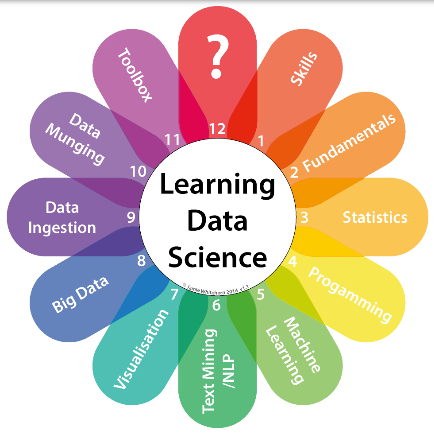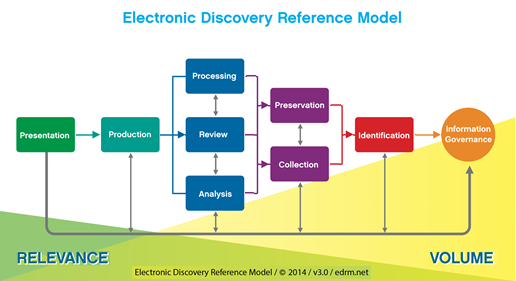This is the fifth of the 2015 LegalTech New York (LTNY) Thought Leader Interview series. eDiscovery Daily interviewed several thought leaders at LTNY this year and generally asked each of them the following questions:
- What are your general observations about LTNY this year and how it fits into emerging trends? Do you think American Lawyer Media (ALM) should consider moving LTNY to a different time of year to minimize travel disruptions due to weather?
- After our discussion last year regarding the new amendments to discovery provisions of the Federal Rules of Civil Procedure, additional changes were made to Rule 37(e). Do you see those changes as being positive and do you see the new amendments passing through Congress this year?
- What are you working on that you’d like our readers to know about?
Today’s thought leader is Jason R. Baron. An internationally recognized speaker and author on the preservation of electronic documents, Jason is a member of Drinker Biddle’s Information Governance and eDiscovery practice and also a member of the leadership team for the Information Governance Initiative. Jason previously served as Director of Litigation for the U.S. National Archives and Records Administration (NARA) and as trial lawyer and senior counsel at the Department of Justice. He was a founding co-coordinator of the National Institute of Standards and Technology TREC Legal Track, a multi-year international information retrieval project devoted to evaluating search issues in a legal context. He also founded the international DESI (Discovery of Electronically Stored Information) workshop series, bringing together lawyers and academics to discuss cutting-edge issues in eDiscovery.
What are your general observations about LTNY this year and how it fits into emerging trends? Do you think American Lawyer Media (ALM) should consider moving LTNY to a different time of year to minimize travel disruptions due to weather?
Well, it’s not going to come as a big surprise to you that I have seen more sessions related to information governance. Those of us who are part of the movement here may see IG under every rock, but I did make a humorous aside at a panel that I participated in on the first day of LegalTech: “Welcome to the 29th session on Information Governance.” It seems to me that we have gone through a hype curve that Gartner talks about with both technology assisted review and with big data, and I think we are definitely going up that same curve on information governance. Whether that will level off at some point, I don’t know. But, I did see it as a more major element of this year’s conference. And, it’s not just that there was a dedicated track to the topic of IG here at LegalTech, but an increased focus on talking about IG issues across several tracks and in new and different ways.
Of course, as we came upon the year 2015, we are now living in a post-Sony, post-Snowden world. If you had to do a Time magazine cover, it might be called the year of the data breach. In my mind the increased focus on cybersecurity issues is a leveraging opportunity for those of us in the information governance community, given that it’s a moment where the C-Suite in corporations is thinking about data breaches all around the enterprise, and also going beyond that to think about their data. Because it’s one thing to secure the borders – I draw a little square when I diagram this out – and to ensure constant vigilance. But it’s another thing to figure out what’s inside the borders that you’re securing. And that’s where the information governance proposition shows up.
So, while the C-Suite is focused on cybersecurity threats, they should also be having a conversation about the amount of data they’re accumulating, the legacy data that they have, how are they getting visualization into the data they have, how are they maximizing the opportunities in terms of ROI on the data that’s being collected on the consumer side, and figuring out what’s of high value and what’s of low value. This is something that the records profession has attempted to do for decades, but we’re in a new world of big data and we need to apply 21st century thinking to this. So, what I see here at the conference is an increased attention on IG and an increased attention on cybersecurity generally and I think that those are “twins” – they go together conceptually.
The world is accelerating in terms of the pace of change of technology and if lawyers aren’t competent in understanding new technologies that they can utilize in their practices across the board – not just in eDiscovery but as a general practice – then they are going to lose out to others in the Darwinian sense. So, I don’t think LegalTech has ever been more important than right now. I think we need to expand our horizon beyond eDiscovery collection, preservation and production to the greater world of analytics and other new things that are happening in the business space. And aside from analytics and IG itself, it would be interesting for LegalTech to talk about artificial intelligence and deep learning and about how robots and software may eventually be replacing lawyers in terms of legal research. It has been very much an eDiscovery-centric conference for a long time, but that’s not everything that’s encompassed in the world of legal practice. So, it would be great to see LegalTech expand beyond its current focus.
As for the possibility of moving LTNY to a different time of year, what could be better than snow storms, slush and ice in New York City in February? Of course, if you’re asking me if I’d like to see it in Hawaii instead, the answer is yes. 🙂
After our discussion last year regarding the new amendments to discovery provisions of the Federal Rules of Civil Procedure, additional changes were made to Rule 37(e). Do you see those changes as being positive and do you see the new amendments passing through Congress this year?
No question about it – there is no known Congressional opposition to the rules and we all expect them to be effectuated. Some close colleagues of mine have made the point that Rule 37 particularly will enormously help large defendants in being able to push back on the trend towards over-preservation of data caught up in litigation. If this holds true, the rules will support an important pillar of practicing good information governance, namely, finding ways in which corporations can continue to dispose of information without running n the risk of spoliation claims in litigation.
I have not a contrary view, but let’s just call it a “view from the mountaintop.” I wrote a letter on behalf of the Information Governance Initiative which is on our web site. It was an open letter to the Federal Rules Committee that was looking at the thousands of comments that came in regarding the proposed rules changes. Basically, the IGI’s position is that the changes to Rule 37 and Rule 26 may be welcome; however, what we believe in even more strongly is that real changes will come with technology and with cultural change. We’re all advocates, at least at the IGI and in my own legal practice at Drinker Biddle, in seeking more optimal ways to automate processes and the overall workflow, to essentially reduce the burden on individuals at all points in the eDiscovery process and in the greater IG space.
We’re also advocates in support of Rule 1, which now more clearly emphasizes cooperation in discovery (via the Notes section of the proposed rule which states “Effective advocacy is consistent with – and indeed depends upon – cooperative and proportional use of procedure.”). I have been very proud to be associated with The Sedona Conference® and the Cooperation Proclamation that it issued. The late Richard Braman spearheaded this movement – as discussed in Joe Looby’s film The Decade of Discovery. Lawyers know that The Sedona Conference has been advocating for lawyers and judges to sign on to a different practice culture, at least at the Meet and Confer stage of litigation, where there is more transparency and more open discussion among lawyers in trying to narrow issues that opposing sides feel strongly about. The ideal result is that the very narrowest set of issues is presented to a judge going forward. I think the culture of cooperation is taking hold. It is not “Pollyanna-ish” to think that, in every district in the country, there will be one or more judges who are aggressively pushing lawyers to be more open and cooperative earlier in the process.
The technology in the eDiscovery space is getting to a level of complexity that you simply have to have a conversation with opposing counsel about preservation issues and about search and access issues early on in the game. We just all need to “raise our games” in terms of being competent to talk about tools to make the eDiscovery process more efficient. I am one who holds the view that enormous resources being continuously devoted to tinkering with the Federal Rules of Civil Procedure misses the larger picture here, which is that the pace of change of technology is so great, that no Rules can ever catch up, as such. As lawyers, we need to give our best advice to clients on how to improve their processes to lower costs. And of course, many remain hopeful that there will be less of a “dagger over the heads” of large entities in litigation with the rules changes going into effect.
What are you working on that you’d like our readers to know about?
Glad you asked, Doug! It has been quite a ride for the past 15 months working in the private sector after 34 years in the government, including at the Justice Department, and being Director of Litigation at the National Archives. The problems faced in the public sector are profound, with respect to information governance challenges, both from a security perspective and well as with respect to record keeping, open government and open access in the digital age. But I now see many of the same issues here that the private sector faces as well. We all live in a world of litigation of increasing complexity. How you get your arms around the need to preserve some of your high value data, while segregating other portions of your data including legacy data that is to be considered low value, is a profound IG issue. I am very fortunate to now be part of a practice group at Drinker Biddle that is talking about all of these important information governance issues, in ways that we hope will be attractive to clients.
I’ve also been having a great time in working with Barclay Blair, Bennett Borden and Jay Brudz as part of the Information Governance Initiative, which is a new think tank and consortium launched a year ago at Legaltech (in 2014). We now have a whole a large number of sponsors and lots of activities continuously going on, including boot camps, dinners, benchmark studies, white papers, and a conference in Chicago in May about Chief Information Governance officers (a new position in the IG space).
I have also had the pleasure of going around the US and the world to be part of screenings of a film by Joe Looby calledThe Decade of Discovery (covered by this blog here, here and here; click here for the latest listing of film screening locations and dates), which traces the evolution of search in eDiscovery since around the year 2000. Joe has done a wonderful job of capturing in a 60 minute documentary the issues we all have been facing. In particular, the film is a tribute to the late Richard Braman and his vision for dialogue and cooperation in discovery. The movie also talks about what I had the privilege of doing, in terms of being tasked to search for White House email, and the film also involves a number of prominent judges and lawyers. So, for the next few months, I’ll continue our world tour with screenings of the film in law schools and other venues talking about these issues.
It’s very important to me to get a message out to younger lawyers and law students in particular that this field of eDiscovery and information governance is growing, it’s a hot field, an interesting field and one where you can be what we call a “SME” — a subject matter expert – in a pretty short amount of time. So, for anyone reading this, the message is “get on board”, become an expert in some niche in this space and in a relatively still chilly market for lawyers, you can distinguish yourself. I would be happy to have that conversation with anyone who is interested in being part of the dialogue about eDiscovery and information governance.
Thanks, Jason, for participating in the interview!
And to the readers, as always, please share any comments you might have or if you’d like to know more about a particular topic!
Disclaimer: The views represented herein are exclusively the views of the author, and do not necessarily represent the views held by CloudNine. eDiscovery Daily is made available by CloudNine solely for educational purposes to provide general information about general eDiscovery principles and not to provide specific legal advice applicable to any particular circumstance. eDiscoveryDaily should not be used as a substitute for competent legal advice from a lawyer you have retained and who has agreed to represent you.









